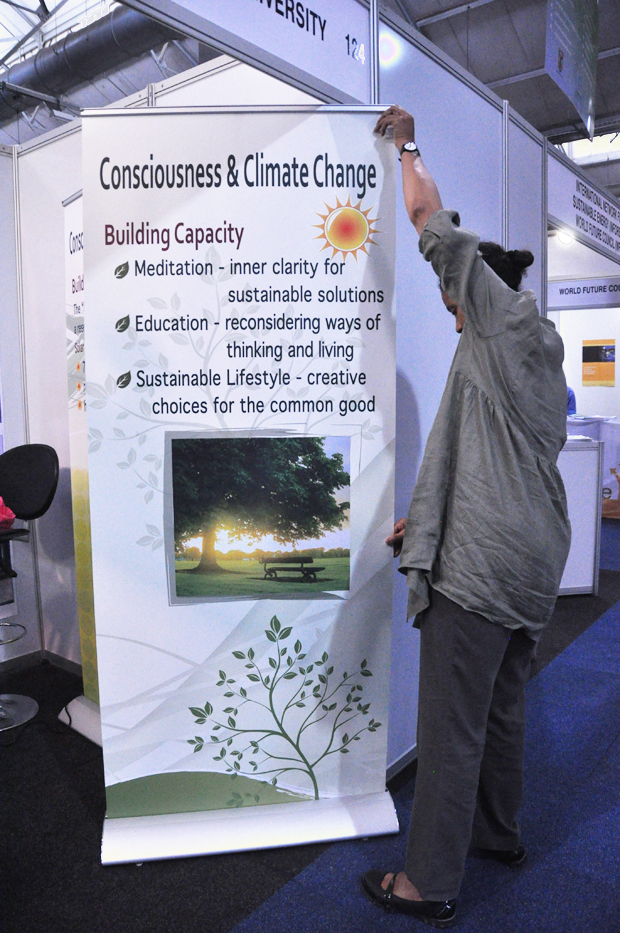Indian spiritual university embarks on solar energy generation


DURBAN, South Africa -- Every year a diverse group of people and organizations come to the annual U.N. climate change talks to display their latest innovations and ideas. Packed into small cubicles, these folks show their past contributions and future initiatives to combat climate change as well as other environmental problems.
The 2011 talks are being held in Durban where negotiators from 194 countries are struggling to agree on steps for fixing the climate crisis. The displays from different parts of the world in the exhibition centre offer much needed respite from the slow-moving negotiations.
One such cubicle belongs to the Brahma Kumaris University, which is based in the desert state of Rajasthan in western India. The University is a spiritual organization that improves the environment through meditation, yoga as well as initiatives that harness solar energy.
“The connection with the environment is consciousness, said Ruth Liddle, who is representing the organization at the climate talks in Durban. “We can’t sustain the planet with the current level of material greed and consumerism.”
The spiritual university, which has a global presence, is constructing a 1-megawatt solar thermal power plant consisting of 770 newly developed parabolic panels at its campus. “India One” -- as it is called -- will generate enough heat and power for the campus of 20,000 people.
In 2009, India set up the world’s largest solar cooker on the roof of the kitchen in the temple complex of the town of Shirdi in the western state of Maharashtra. It can reportedly feed up to 20,000 devotees a day. The following year, a larger solar cooker was set up in India’s richest temple complex in Tirupathi in the southern state of Andhra Pradesh.
The new solar power plant is being built at a cost of $660 million. Its builders have said that this plant “will be the first of its kind in the world in dish technology in direct steam generation mode, with full thermal storage for 16 hrs continuous operations for base load.” There is also talk of constructing larger 50 MW solar thermal plants in the country.
Chandra Bhushan, deputy chief of the Centre for Science and Environment in New Delhi, explained that India was seeing the expansion of several community-based programs in the solar sector as well projects by the Indian government, which has promised to generate 20,000MW of solar energy by 2020.
"Solar energy is increasing at a rapid pace in India and costs are coming down," said "There is a huge potential for its growth." Bhushan noted that increasing deployment of solar energy was also making it less costly. "If we are more aggressive in solar energy it will become more economically viable," he said.
The University project, however, still needs more funds to be completed by the next year, according to Liddle. It is presently financed by individual benefactors, the World Renewal Spiritual Trust and the German government.
In a separate program, the University is also encouraging Indian farmers to go into their fields to mediate with their seeds before planting them. They say that meditation sends out good thoughts that cool the atmosphere with love and harmony.
This sort of “yogic farming” is said to improve both the health of the farmers, seeds and the land. If the seed is healthy then fewer pesticides will be used. “The famers won’t have to depend on companies like Monsanto,” said Liddle. A happier family may also prevent farmer suicides, which are rampant in India especially due to large debts. Whether seed-meditation is effective is being studied.
Photo: Betwa Sharma
This post was originally published on Smartplanet.com